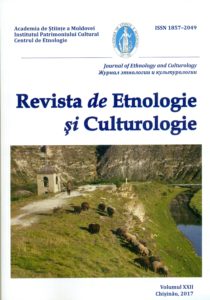Impactul populației ruse asupra activității
Gimnaziului pentru fete al zemstvei din Chişinău
The influence of the Russian population at the Women’s Gymnasium of Zemstvo in Chisinau
Author(s): Sergey SychevSubject(s): History, Essay|Book Review |Scientific Life
Published by: Institutul Patrimoniului Cultural al Academiei de Științe a Moldovei
Keywords: zemstvo; women’s gymnasium; Russian population; education; scholarship; L. Belyugova; statistics; social stratum; religion; didactics
Summary/Abstract: This article focuses on the influence of the Russian population on the activity of the gymnasium: the reasons for transferring the educational institution to zemstvo administration, the achievements of students in their studies, zemstvo scholarships, and the pedagogical activity of teachers. THe statistical data are presented on the academic achievement, religion, social strata and nationality. In 1864, in the city of Chisinau, L. Belyugova founded the first women’s school as a gymnasium. In 1871, the Regional Bessarabian Zemstvo took over the women’s gymnasium under their control in order to train national teachers. On the basis of the Charter of 1874, the following subjects were taught: God’s Law, Russian language, mathematics, geography, natural history and physics, and calligraphy as compulsory disciplines, as well as French, German, Latin, drawing and pedagogy as optional ones. For their success in school, pupils received scholarships from the Bessarabian Zemstvo. As of 1880, Russians (47.7%) and Moldavians (23.5%) predominated in the gymnasium. Of all the pupils, the absolute majority were Orthodox Christians (78.4%); 68.3% of the pupils were of noble origin, followed by children of merchants (14%) and philistines (11.6%).
Journal: Revista de Etnologie şi Culturologie
- Issue Year: XXII/2017
- Issue No: 2
- Page Range: 107-112
- Page Count: 6
- Language: Romanian

